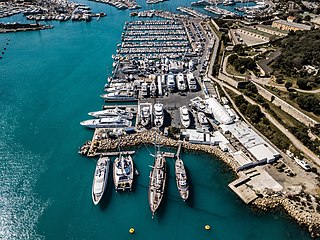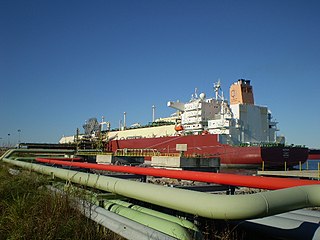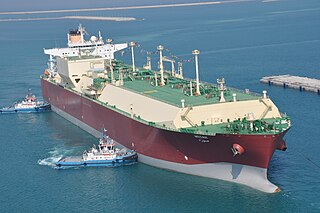
Nigeria’s transport network has expanded in recent years to accommodate a growing population. The transport and storage sector was valued at N2.6trn ($6.9bn) in current basic prices in 2020, down from N3trn ($8bn) in 2019, according to the National Bureau of Statistics (NBS). This was reflected in a lower contribution to GDP, at 1.8% in the fourth quarter of 2020, down from 2.1% during the same period the previous year but higher than the 0.8% recorded in the third quarter of 2020. One of the most significant challenges facing the sector is meeting the needs of both large coastal cities and rural inland communities in order to fully unlock the country’s economic potential. This is especially the case with mining and agriculture, both of which are expected to benefit from two large-scale projects: the Lekki Port in Lagos and the Kano-Maradi rail line in the north of the country.

A shipyard, also called a dockyard or boatyard, is a place where ships are built and repaired. These can be yachts, military vessels, cruise liners or other cargo or passenger ships. Compared to shipyards, which are sometimes more involved with original construction, dockyards are sometimes more linked with maintenance and basing activities. The terms are routinely used interchangeably, in part because the evolution of dockyards and shipyards has often caused them to change or merge roles.

Chantiers de l'Atlantique is a shipyard in Saint-Nazaire, France. It is one of the world's largest shipyards, constructing a wide range of commercial, naval, and passenger ships. It is located near Nantes, at the mouth of the Loire river and the deep waters of the Atlantic, which make the sailing of large ships in and out of the shipyards easy.

Methane Princess and Methane Progress were the first purpose-built LNG carriers, entering service in 1964 and used to transport natural gas from Algeria to the UK. Methane Princess was built at the Vickers shipyard at Barrow-in-Furness and her sister by Harland and Wolff in Belfast.
Onne also known as Onne-Eleme, is a town in Eleme, Rivers State, Nigeria. The town is a host to one of the two prominent ports in Nigeria. It is bordered by the towns of Alode, Ebubu and Ngololo River which is one of the tributaries of Bonny River.

Loch Striven is a sea loch extending off the Firth of Clyde, and forms part of the Cowal peninsula coast, in Argyll and Bute, Scotland.

The Bellamya was a supertanker, built in 1976 by Chantiers de l'Atlantique at Saint-Nazaire for the French branch of Shell Oil. She was the second Batillus class supertanker. Bellamya, together with her sister ships Batillus, Pierre Guillaumat and Prairial, was one of the biggest ships in the world, surpassed in size only by Seawise Giant built in 1976, and extended in 1981, although the four ships of the Batillus class had a larger gross tonnage. If size is indicated by gross tonnage—a measure of volume—Bellamya was the largest ship ever built.

An LNG carrier is a tank ship designed for transporting liquefied natural gas (LNG).
Silvanus was a steam tanker built in 1920–1921 by the Southwestern Shipbuilding & Drydock Company of San Pedro for the Anglo-Saxon Petroleum Company with the intention of transporting oil and petroleum products between Dutch East Indies and various destinations in Europe and the Far East. The tanker was employed in this capacity through the first part of 1926. In April 1926 Silvanus collided with the tanker Thomas H. Wheeler in the Mississippi River, resulting in the explosion and death of 26 seamen. Silvanus was declared a total loss and sold at auction to the newly formed Petroleum Navigation Company of Texas. The tanker was rebuilt and renamed Papoose and started operating in March 1927. In March 1942, she was attacked by German U-boat U-124 off the coast of North Carolina. The ship drifted for several days and eventually sank in 200 feet (61 m) of water off Oregon Inlet.

Q-Max is a type of ship, specifically a membrane type LNG carrier. In the name Q-Max, "Q" stands for Qatar and "Max" for the maximum size of ship able to dock at the Liquefied natural gas (LNG) terminals in Qatar. Ships of this type are the largest LNG carriers in the world.

The Nigerian Ports Authority (NPA) is a federal government agency that governs and operates the ports of Nigeria. The major ports controlled by the NPA include: the Lagos Port Complex and Tin Can Island Port in Lagos; Calabar Port, Delta Port, Rivers Port at Port Harcourt, and Onne Port. Operations of the NPA are carried out in affiliation with the Presidency of (Nigeria) and the Nigerian Shippers' Council. The Head office of the Nigerian Ports Authority is located in Marina, Lagos.
Nigeria LNG Limited (NLNG) is a liquefied natural gas (LNG)-producing company and a liquefied natural gas plant on Bonny Island, Nigeria.

Qatar Gas Transport Company Limited, commonly known as Nakilat is a Qatari shipping and maritime company. Its LNG shipping fleet is the largest in the world, comprising 69 vessels. The company also jointly owns one Floating Storage Regasification Unit (FSRU) and 4 very large LPG carriers (VLGCs). Through its in-house shipmanagement, Nakilat manages and operates the four very large LPG carriers and 14 LNG carriers.

Bonny Gas Transport is a subsidiary of Nigeria LNG or NLNG which itself is an incorporated joint-venture of Nigerian National Petroleum Corporation (NNPC), Shell Gas B.V., TotalEnergies Gaz & Electricite Holdings and Eni International N.A. N. V. S.àr.l. It owns and operates a number of LNG tankers.

Mozah is a Q-Max LNG carrier operated by Qatargas II. The vessel was built in 2008 by Samsung Heavy Industries and is tied with her sister ships for the largest LNG carrier in the world. The vessel is part of a contract for 14 same-size ships with maximum particulars to berth at Ras Laffan terminal in Qatar.
Methane Pioneer was the first oceangoing liquified natural gas tanker in the world. Built in 1945 as a cargo ship named Marline Hitch, the vessel was renamed Don Aurelio and Nomarti before being rebuilt in 1958 for the purpose of transporting LNG and operated between 1959 and 1972. The ship was later renamed Aristotle.

MSC World Europa is a World-class cruise ship delivered for MSC Cruises and built at the Chantiers de l'Atlantique shipyard in Saint-Nazaire, France. MSC World Europa is set to commence public operations from 20 December 2022 in a 9-day roundtrip from Qatar after serving as a hotel ship in Doha during the 2022 FIFA World Cup. She will become MSC's first World-class ship and be joined by three sister ships in 2024, 2025, and 2027, respectively.
SS Bebatik was the lead ship of the seven B-class LNG tankers. She was also known previously as Gadinia. She is named after the bebatik, a species of fish found in Brunei and Malaysia.

SS Edvard Grieg was a Liberty ship built in the United States during World War II. She was named after Edvard Grieg, a Norwegian composer and pianist. She was laid down as the SS Thomas F. Bayard after Thomas F. Bayard, but she was renamed before being put into service, as she was chartered to Norway. In 1951 she was sold and renamed Ultragaz São Paulo. In 1951 she was converted to a Liquid natural gas Carrier. In 1952 she was sold and renamed Mundogaz São Paulo. In 1972 she was removed from service.














